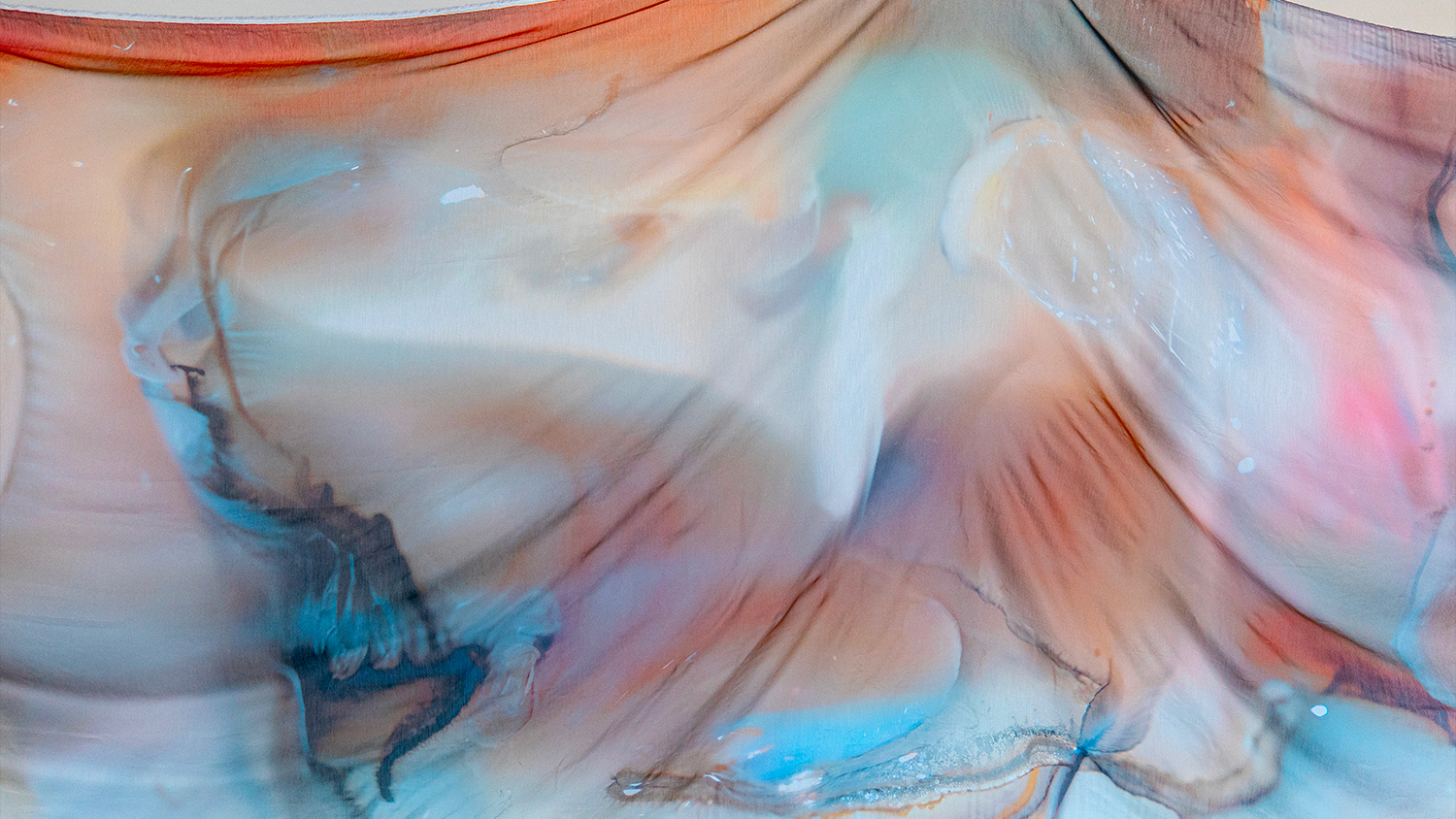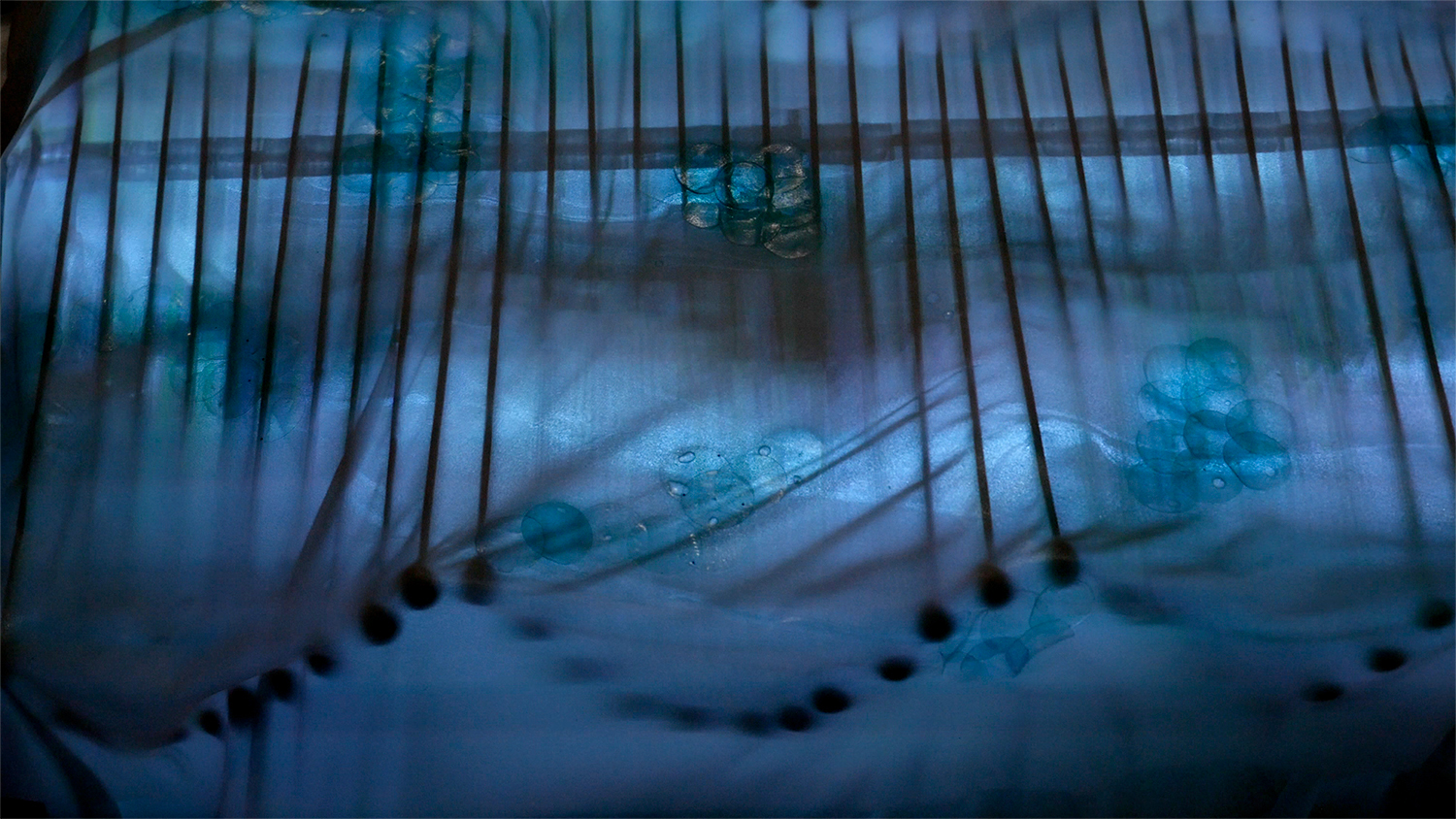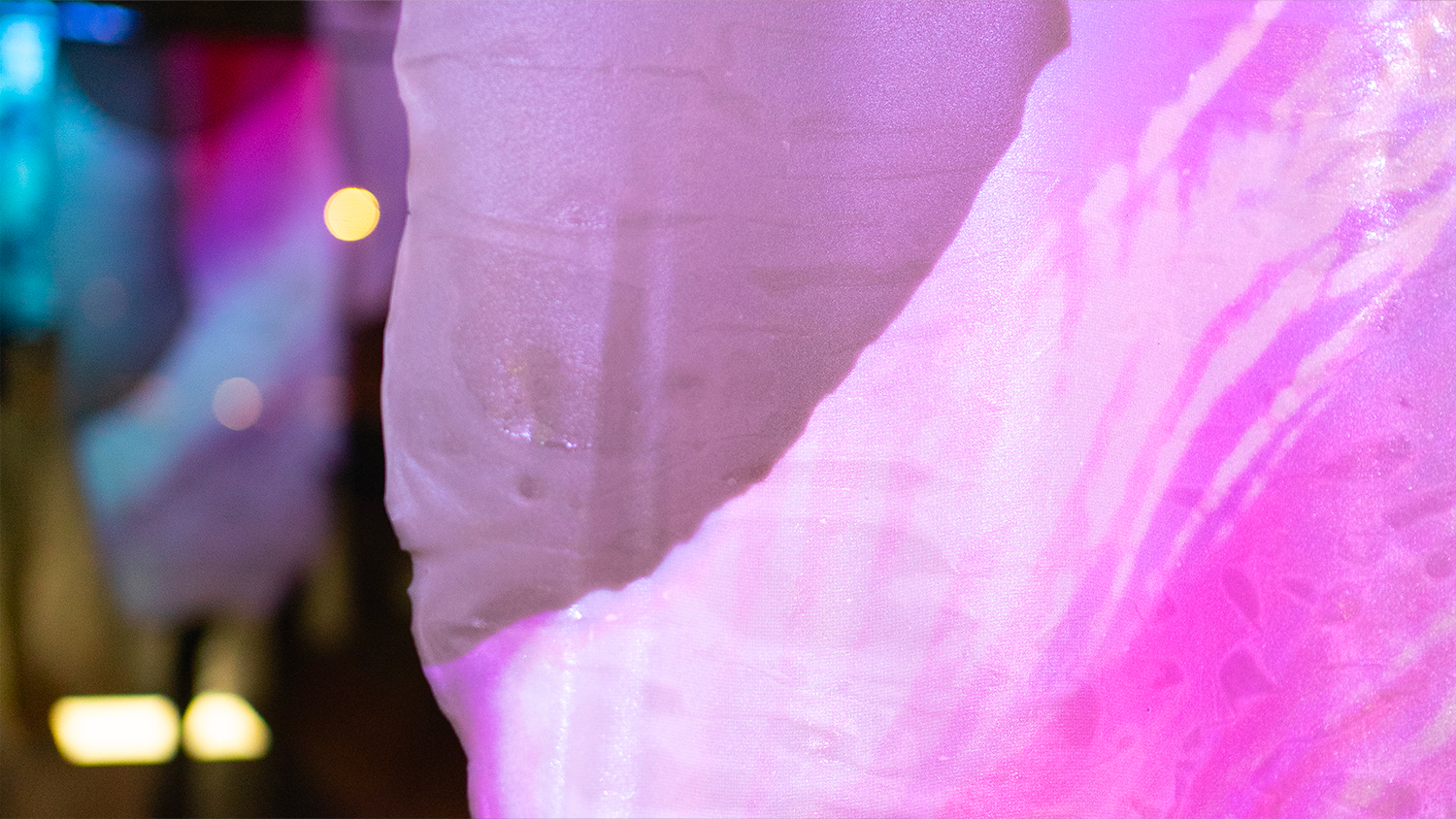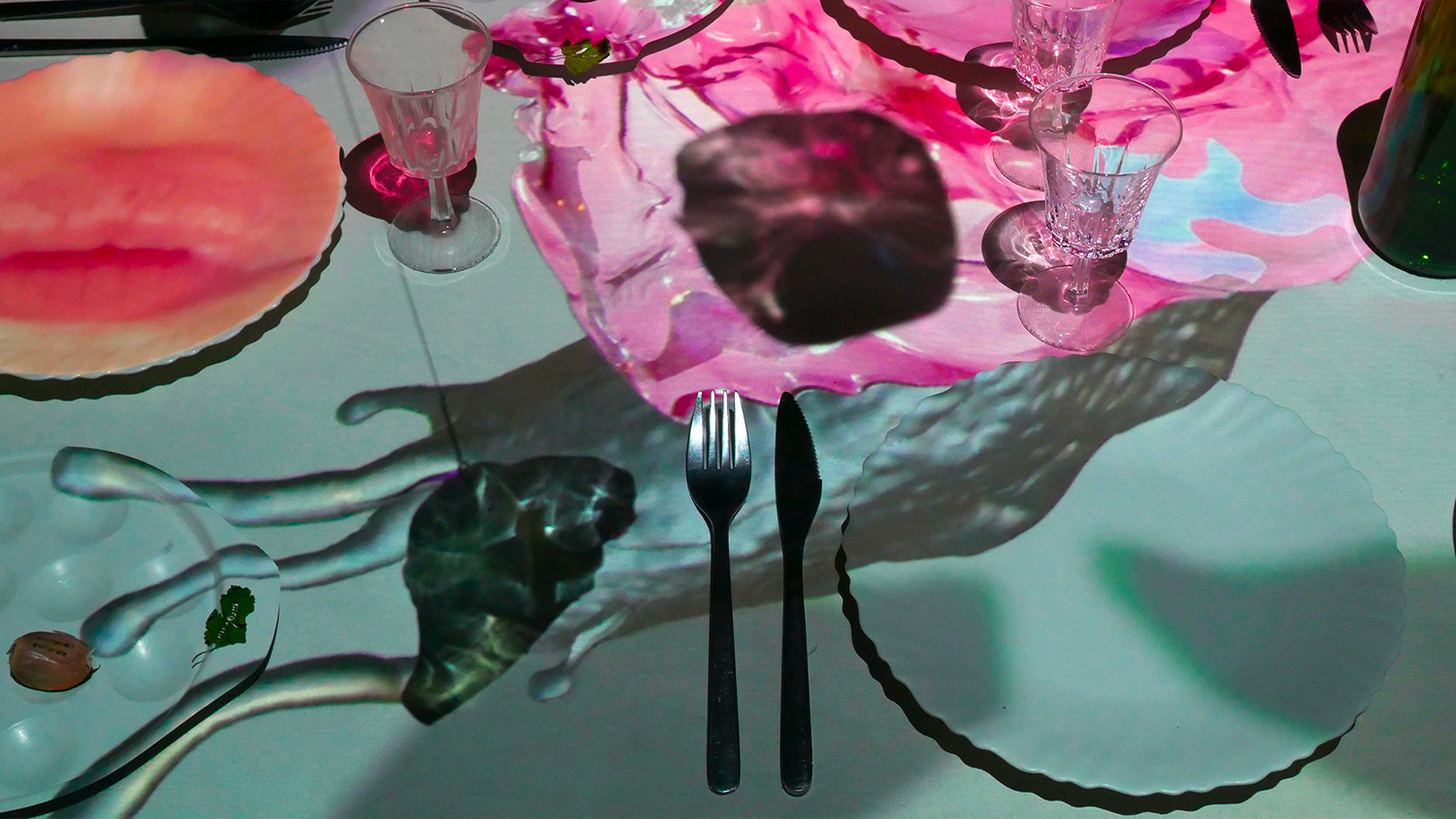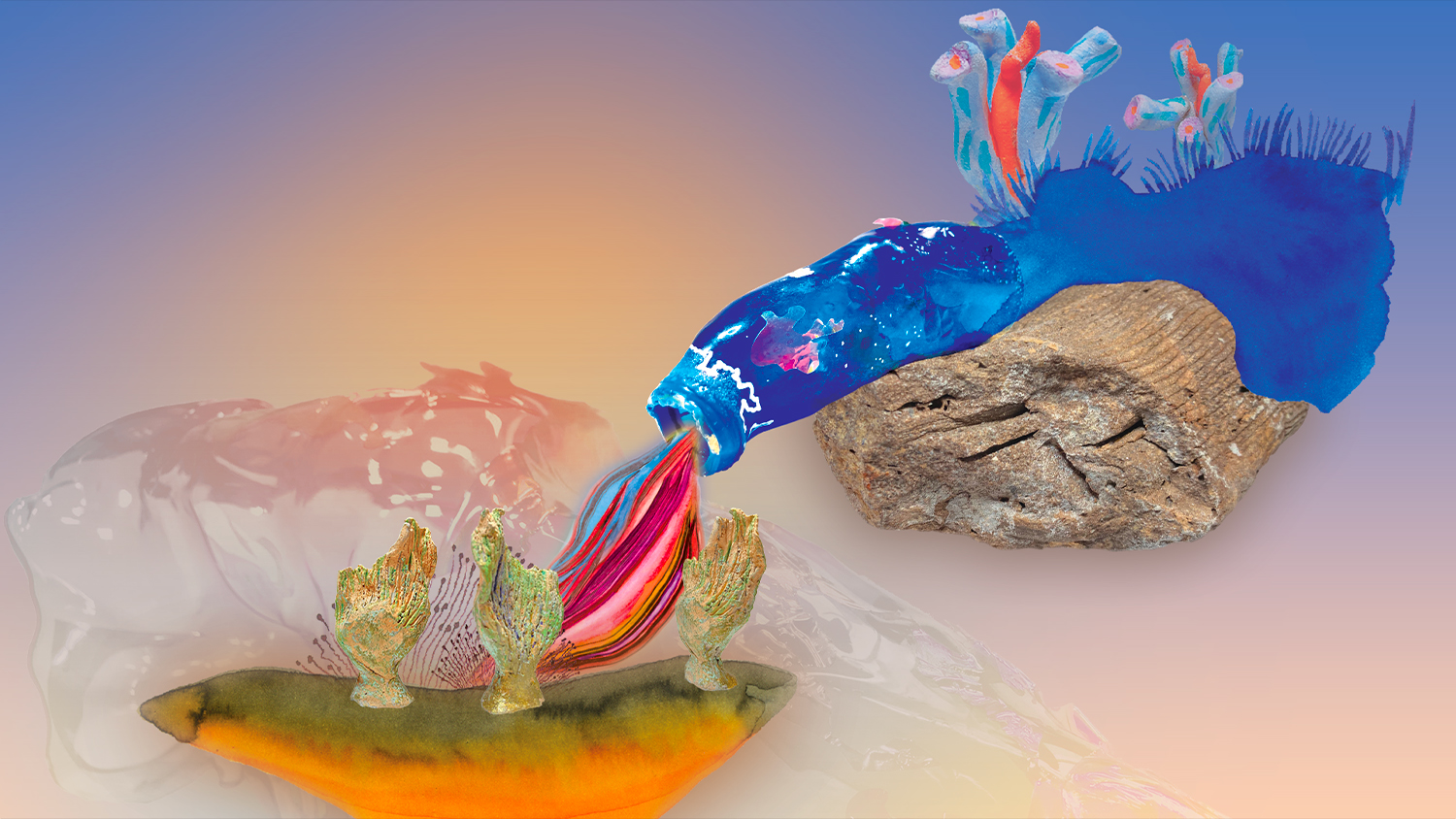LES OUBLIÉES
MÉMOIRES DE COQUILLES QUE L’ON CROYAIT VIDES
installation, sculptures sonores, 2024/2025
sculptures, hauts parleurs
dimensions variables entre 20 et 45 cm
Les Oubliées, Mémoires de coquilles que l’on croyait vide fait partie d’un corpus d’oeuvres intitulé Ma peau de monstre soutenu par la DRAC Hauts de France
EXUVIE
photographie, impression sur soie/coton, 2025
tissus imprimée
130x568 cm
Exuvie fait partie d’un corpus d’oeuvres intitulé Ma peau de monstre
soutenu par la DRAC Hauts de France
ONDOYIONS
installation, 2023
bioplastique, mécanique, céramique, vidéos, biorésine, impression 3D, leds
150x150x40 cm
Présentée en Mars 2023, exposition Le Serpent Bleu, Atelier Bouillon, Lille
PEAUX COMMUNES
installation vidéo, 2023
tissus en bioplastique, chaines, vidéo
100x200x60 cm
Présentée en Mars 2023, exposition musicale Contemporary Club n°1, Galerie IN/OUT, Lille
À L’OMBRE DU NOISETIER
installation, 2022
tables, nappes, teintures vétégales, céramiques, mécanique, fruits gravés, pousses végétales
dimensions variables
Présentée en Juillet et en Septembre 2022, CAPS Utopia, Biennale Lille 3000, Plaine de la Poterne, Lille
AMOURS VISQUEUX
installation vidéo et sonore, 2022
vidéo, son, gravures laser, bioplastique
140x80x90 cm
Présentée en Mars 2022, exposition En Creux, Atelier Bouillon, Lille
GASTÉROÏDE
installation vidéo et sonore, impressions : papier peint, poster, cartes A5, 2022
vidéo, son, céramiques, bioplastiques, dessins, impressions
dimensions variables
Présentée en Décembre 2021, La Nuits des Arts, Limonade Paper, Roubaix
MOTHER TREE
installation extérieure interactive lumineuse et sonore, 2021
biorésine, leds, plastique recyclé, haut parleurs, micro, ordinateur
dimensions variables
Soutenue et présentée en Octobre 2021, Vendredi Party #4, Le Château Éphémère, banlieue parisienne
MÀS QUE LA CÀRA : PENÌNSULA
installation vidéo, 2021
vidéo, bois, impressions 3D, impressions papier
80x80 cm
Présentée en Septembre 2021, exposition COMME IEL VOUS PLAIRA, Atelier Bouillon, Lille
PIEL DE CEBOLLA


